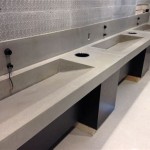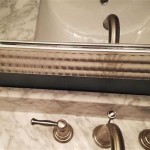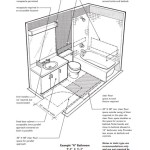Venting Bathroom Fan Through a Metal Roofing System
Proper ventilation is a crucial aspect of maintaining the structural integrity and indoor air quality of any building. In bathrooms, ventilation is particularly important to remove excess moisture generated from showering, bathing, and daily use. This moisture, if left unchecked, can lead to mold growth, structural damage, and an unhealthy living environment. Venting a bathroom fan through the roof is a common and effective solution, but doing so with a metal roofing system presents unique challenges and requires careful consideration of materials, techniques, and local building codes.
Metal roofing systems, known for their durability, longevity, and energy efficiency, require specific installation practices to maintain their watertight seal and prevent leaks. Penetrating a metal roof for any purpose, including venting a bathroom fan, necessitates a thorough understanding of the roofing system's design and construction. Improperly installed vents can compromise the roof's weather resistance, leading to water damage, corrosion, and costly repairs. Therefore, selecting the right type of vent, using appropriate sealing methods, and adhering to manufacturer's specifications are paramount.
Key Considerations Before Installation
Before embarking on a project to vent a bathroom fan through a metal roof, several factors must be carefully evaluated. These considerations will influence the choice of materials, the installation process, and the long-term performance of the ventilation system. Understanding these factors will minimize the risks of roof damage and ensure proper functionality.
First and foremost, identifying the type of metal roofing system is essential. Metal roofs come in various profiles, including standing seam, corrugated, and shingle-style. Each profile has unique characteristics that affect how a vent can be installed. Standing seam roofs, for example, often allow for vent installations that do not require penetrating the panels themselves, preserving the roof's integrity. Corrugated and shingle-style roofs typically require penetration, but the specific location and sealing methods will vary depending on the profile.
Secondly, the local building codes and regulations must be consulted. Many jurisdictions have specific requirements for roof penetrations, ventilation systems, and electrical work. These codes may dictate the type of vent allowed, the required distance from other roof features, and the necessary permits. Failure to comply with these regulations can result in fines, rework, and potential safety hazards.
Thirdly, the climate and environmental conditions should be considered. In areas with heavy snowfall, the vent must be able to withstand the weight of accumulated snow and ice. In coastal regions, corrosion-resistant materials should be used to prevent premature deterioration. The prevailing wind direction can also influence the placement of the vent to maximize airflow and prevent backdrafts.
Finally, access to the attic and the roof must be assessed. Safe access is crucial for both the initial installation and future maintenance. If the attic is difficult to access or the roof is steep or high, professional installation may be necessary.
Selecting the Right Vent and Materials
Choosing the appropriate vent and associated materials is critical for a successful and long-lasting installation. The vent must be compatible with the metal roofing system, able to effectively exhaust moisture, and durable enough to withstand the elements. Improper material selection can lead to premature failure, leaks, and costly repairs.
Several types of vents are specifically designed for metal roofs. These include:
- Roof vents with metal flashing: These vents feature a metal base that matches the roofing material and integrates seamlessly with the roof profile. The flashing is designed to create a watertight seal around the vent, preventing water from penetrating the roof.
- Ridge vents: These vents are installed along the ridge of the roof and provide continuous ventilation. They are particularly suitable for metal roofs with a ridge cap.
- Turbine vents: These vents use wind power to draw air out of the attic. They are effective for removing large amounts of moisture but may not be suitable for all metal roof types.
- Gooseneck vents: These vents have a curved shape that helps to prevent rain and snow from entering the vent. They are a common choice for bathroom fan vents.
When selecting a vent, it is essential to ensure that it is made of materials that are compatible with the metal roofing. Using dissimilar metals can lead to galvanic corrosion, which can weaken the roof and the vent over time. For example, if the roof is made of aluminum, the vent should also be made of aluminum or a compatible alloy. Galvanized steel vents are generally compatible with most steel roofing systems.
In addition to the vent itself, other essential materials include:
- Sealing tape: High-quality sealing tape, such as butyl tape or polyurethane tape, is used to create a watertight seal between the vent flashing and the roof.
- Sealant: Metal roof sealant, specifically formulated for use with metal roofing systems, is used to seal any gaps or cracks around the vent.
- Fasteners: Screws or rivets made of compatible metal are used to secure the vent to the roof.
- Ductwork: Insulated ductwork is used to connect the bathroom fan to the vent. The ductwork should be properly sized to ensure adequate airflow.
It is always recommended to consult with the metal roofing manufacturer or a qualified roofing professional to determine the best vent and materials for a specific application.
Installation Procedures and Best Practices
The installation process for venting a bathroom fan through a metal roof requires meticulous attention to detail and adherence to best practices. Improper installation can compromise the roof's watertightness and lead to costly repairs. The following steps outline a general approach to the installation process, but it is crucial to consult with the manufacturer's instructions and local building codes before proceeding.
Step 1: Planning and Preparation: Begin by carefully planning the location of the vent. Choose a location that is as close to the bathroom fan as possible to minimize the length of the ductwork. Ensure that the vent is not located near any obstructions, such as chimneys or other roof features. Mark the location of the vent on the roof, taking into account the dimensions of the vent flashing.
Step 2: Cutting the Hole: Using a drill and a hole saw or a jigsaw, carefully cut a hole in the roof at the marked location. The hole should be slightly larger than the diameter of the ductwork. Be extremely cautious when cutting the metal roofing to avoid damaging the surrounding panels. Use safety glasses and gloves to protect yourself from sharp edges and debris.
Step 3: Installing the Vent Flashing: Place the vent flashing around the hole, ensuring that it fits snugly against the roof surface. Apply sealing tape between the flashing and the roof to create a watertight seal. The type of sealing tape and the application method will vary depending on the type of metal roofing system. Follow the manufacturer's instructions carefully.
Step 4: Securing the Vent: Secure the vent to the roof using screws or rivets made of compatible metal. The fasteners should be spaced evenly around the vent flashing. Over-tightening the fasteners can damage the roofing and compromise the seal, so apply just enough pressure to securely hold the vent in place.
Step 5: Sealing the Vent: Apply metal roof sealant around the edges of the vent flashing and the fasteners. This will provide an additional layer of protection against water intrusion. Ensure that the sealant is compatible with the metal roofing material and that it is applied in a uniform and consistent manner.
Step 6: Connecting the Ductwork: Connect the insulated ductwork from the bathroom fan to the vent. Use metal duct tape or clamps to secure the ductwork to the vent. Ensure that the ductwork is properly insulated to prevent condensation. Seal any gaps or cracks with metal duct tape.
Step 7: Testing: After completing the installation, test the bathroom fan to ensure that it is functioning properly. Check for any leaks around the vent and the ductwork. If any leaks are detected, re-seal the affected areas with sealant.
It is strongly recommended to hire a qualified roofing professional experienced in working with metal roofing systems for this type of project. They have the knowledge, skills, and tools necessary to ensure a safe and effective installation. Professional installation can minimize the risks of roof damage, leaks, and other problems.
Regular inspection and maintenance of the vent are essential to ensure its long-term performance. Inspect the vent at least once a year for any signs of damage, corrosion, or leaks. Clean the vent to remove any debris or obstructions that may be blocking airflow. Re-seal any areas where the sealant has deteriorated. By following these best practices, a bathroom fan can be safely and effectively vented through a metal roofing system, ensuring a healthy and comfortable indoor environment.

Venting A Bath Fan In Cold Climate Fine Homebuilding

Broan Nutone 3 In To 4 Roof Vent Kit For Round Duct Steel Black Rvk1a The Home Depot

Metal Roof Ridge Vents Guide 1st Coast Roofing Supply

What Types Of Roof Vents Are There Active Ventilation S Inc

Everbilt 4 In To 6 Soffit Exhaust Vent Sevhd The Home Depot

Why Does My Bathroom Ceiling Fan Drip Foothills Roofing Calgary

Where Do Bathroom Vents Go Lopco Contracting Ri

Metal Roof Ridge Vents Guide 1st Coast Roofing Supply

Roofing Ventilation And Diffe Types Of Vents Constro Facilitator

Why Does My Bathroom Ceiling Fan Drip Foothills Roofing Calgary
Related Posts







